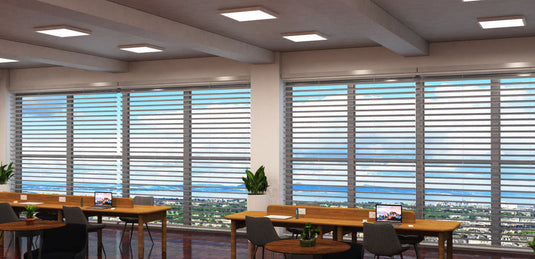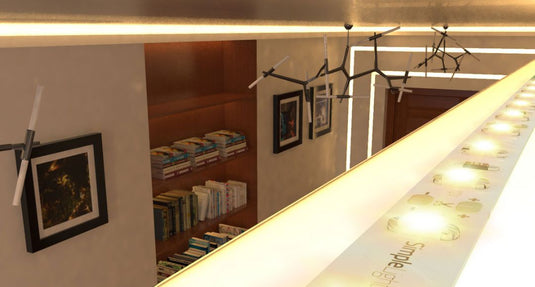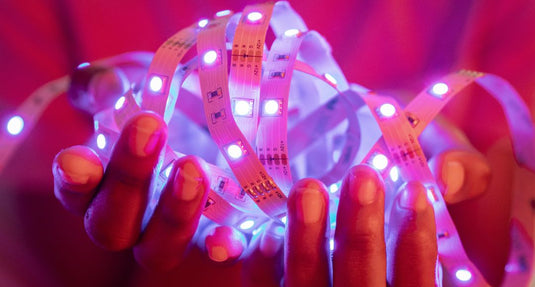Lighting can affect your overall energy consumption, so you should be careful about the fittings you use in your home and/or business. You should also look into energy-efficient options to avoid incurring unnecessary electrical charges.
LED technology can provide an energy-efficient lighting solution. With it, you can enjoy a brilliant space without paying a hefty electricity bill!
How LED Technology Works: Energy Efficiency Explained
To better understand LED technology, let's examine how they work and how they compare with traditional lights!
Understanding LED Lighting
LED lighting works by transforming electricity into light. The electricity passes through a semiconductor. Then, inside the semiconductor, electrons move around as the current flows, releasing energy. The released energy comes in the form of light, which you see from the LED.
Since LED lamps do not rely on heating a filament to produce light, they become more efficient and long-lasting!

LED vs Incandescent and CFL Lighting
Incandescent and CFL lighting were used before the invention of LED lights. While they do the job of illumination, they’re not as efficient and long-lasting as the newer technology.
While LEDs, incandescent, and CFLs can produce the same lumens, the energy requirement varies greatly. Say you have 2600 lumens. An incandescent bulb will need 150w to produce that brightness, while a CFL bulb will need 42w. CFLs are more efficient than incandescent bulbs, but an LED bulb only requires 20w—30w!
Heat Production
Compared to traditional lighting solutions, LED fixtures produce minimal heat—negligible, only warm to the touch. If you happen to come across an incandescent bulb that's been switched on for a few minutes, you'll instantly feel the heat even without directly touching its surface!
Because LEDs produce less heat, they are safer, especially in heat-sensitive places.
Electricity Bill Savings: Breaking Down the Numbers
How much savings can you get from LED lighting?
Lower Power Consumption
As mentioned, LEDs can produce the same brightness as traditional lights but require a lower wattage. If you're initially using a 150w incandescent bulb, switching to a 20w—30w LED bulb will significantly reduce your electrical cost!
Energy Efficiency in Lumens
Say an incandescent bulb operates at one watt per lumen. An LED bulb provides more lumens per watt, allowing you to experience brightness without too much power. Because of this, your energy consumption drops, giving you more energy savings.
Longer Lifespan Means More Savings
Besides reducing electrical consumption, LED lighting can help lower maintenance costs. How so? LED fixtures are long-lasting! They typically live for about 15,000 – 30,000 hours, significantly outlasting an incandescent bulb that lives for only 1,000 hours.
With fewer replacements, you don't have to spend much on maintenance!
Environmental and Financial Benefits
Did you know that using LEDs will not only benefit you but also the environment? You see, with LED lighting, you can reduce your carbon footprint and electrical consumption. In addition, LED lights are made from recyclable materials and don’t contain any hazardous chemicals like mercury.
Conclusion
Switching to LED technology is not just to keep up with what's new in the market. It enables you to live cost-efficiently and help protect the environment. With LED lighting, you are confident that your brilliant home will not cause harm to your expenses, and you can freely enjoy it without inhibitions!
If you’re looking for top-grade LED lighting, visit our website, LED Supplier! We have a comprehensive range of kitchen, bathroom, outdoor and commercial lighting solutions.




